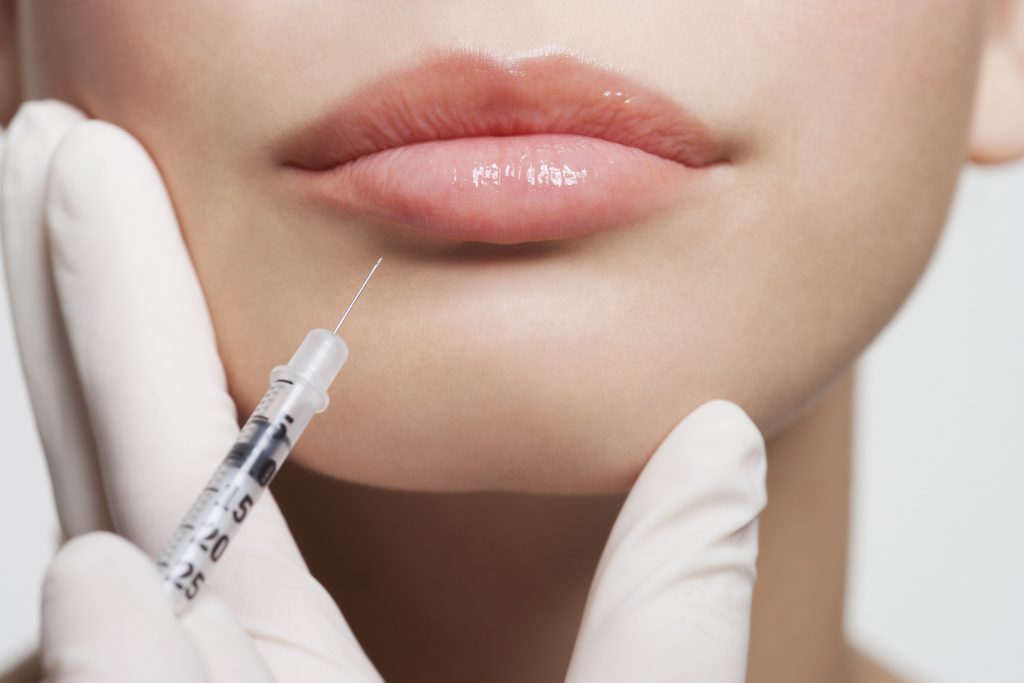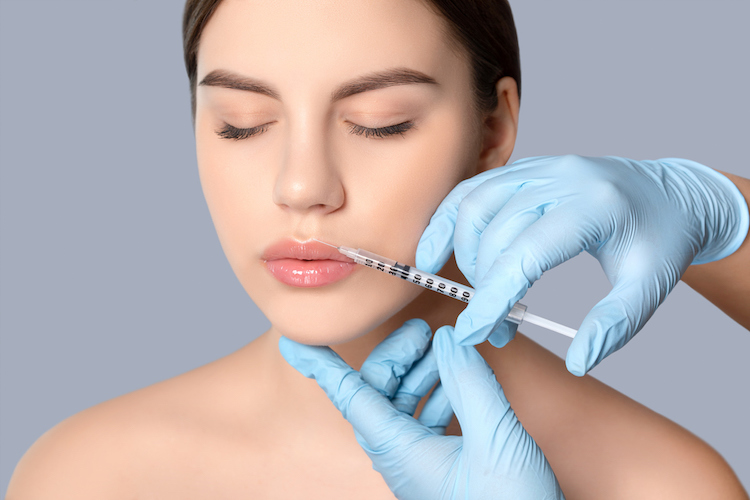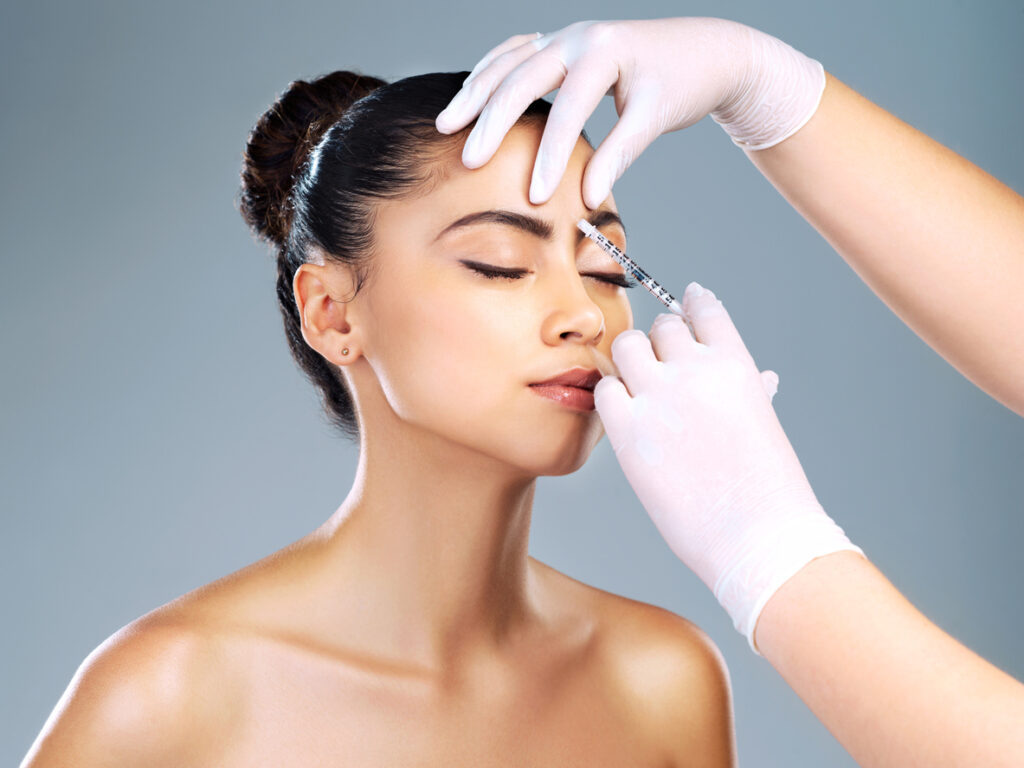Unqualified Injectors: Buy Now, Pay Later…
Receiving your cosmetic treatments from a licensed medical professional is the safest way to ensure your speedy recovery and long-term satisfaction. Many patients will be fully aware of the explosion of popularity in the neuromodulator and dermal filler industry. Unfortunately, one side effect of this surge of success is the increased risk of complications caused by people who do not have the necessary qualifications to administer medical-grade treatments. Charlatan practitioners, and those who just do not have the expertise to perform the techniques safely, can, and do, cause serious problems for unsuspecting patients who have placed their trust in them. These issues may arise as a result of poor hygiene practices, nonmedical grade products, large volume injections, incorrect placement of the product, or a combination of all of the above.(1)
For residents of Baltimore and surrounding cities, you needn’t worry! For quality medical treatment that you can trust, look no further than Valley Plastic Surgery & Medi-Spa; one of the Mid-Atlantic’s leading plastic surgery clinics and expert providers of the safest cosmetic treatments by the most qualified healthcare professionals in the field. With over 20 years of experience, Alyson Wells, M.D., F.A.C.S., is a board-certified plastic surgeon who advocates for the highest standard of individualized care for each of her patients. Schedule an appointment with a medical professional you can trust by calling (410) 628-8200 at your earliest convenience!
Causes of Complications
Studies have demonstrated that the prevalence of cosmetic injectable complications tends to decrease as clinical experience accumulates, (2) evidencing the need not only for rigorous training but also receiving treatment from a reputable practice. In unskilled hands, there are three main reasons why injectable treatments can go wrong.
- Incorrect volume – Negative side effects can arise if the untrained injector uses too much or too little of the substance.
- Incorrect depth – If injections are made too superficially or too deeply, there may be several adverse conditions that arise.
- Incorrect injection area – Asymmetrical injection sites and poorly judged injection areas can have a significant negative effect on the aesthetic results of the treatment.
What Can Go Wrong?
It is an unfortunate fact that receiving cosmetic injection treatment from an untrained individual is fraught with uncertainty and risk, potentially opening a “Pandora’s Box” of possible adverse side effects.
Neuromodulator Injection Complications
As is commonly known, the botulinum toxin prevents the release of the neurotransmitter acetylcholine which results in paralysis of the targeted area and wrinkle reduction when administered successfully. Common neuromodulator injectables such as Botox, Dysport, and Xeomin have certain properties that, if handled incorrectly, can lead to risky consequences like those outlined below.
- Ptosis
Sagging of the eyelids and lips is sometimes a side effect of neuromodulator injection. Around one in 20 people who get Botox will experience issues with eyelid droop, but this number falls to less than 1% if a skilled doctor does the injection.(4)
- Swallowing & Speech Issues
Studies have shown that facial neuromodulator injections can affect several key muscle groups responsible for swallowing and speech production. (5) These same studies have also provided conclusive evidence that higher doses of botulinum toxin, or misjudged deeper injection, can result in xerostomia (insufficient saliva production), dysphagia (difficulty swallowing), and dysarthria (slow or slurred speech).
- Neck Weakness
In some instances, neck flexion issues resulting from inaccurate injection can result in patients being unable to keep their head up,(5) negatively impacting mobility and the easy completion of everyday tasks.
- Asymmetry
Poorly chosen injector placement can cause facial asymmetry,(5) which can be both aesthetically undesirable and emotionally distressing.
Dermal Filler Injection Complications
- Allergies
Although allergic reactions to fillers are rare, failure to perform allergy testing before a filler procedure can mean adverse allergic reactions for some patients. This may involve angioedema (swelling under the skin) or, in more serious cases, anaphylaxis.
- Inflammation & Infection
Infection can be caused by bacteria, viruses, or Candida species (fungus). Unfortunately, inexperienced and untrained individuals can mix or reformulate products in less-than-ideal conditions, leading to dramatic complications due to microbial contamination, including severe inflammation and tissue. (2)(3)
- Lumps and Nodules
Elevated skin lesions such as nodules and deposits under the skin that cause lumps and bumps can happen when injectables are administered poorly. Skin irregularities can be caused by almost any filler when too much is injected into a small area.(2)
- Edema
Edema can happen anywhere that has been ineffectively treated with fillers. One concerning example is premalar edema. This refers to undesired swelling of the cheek, which can occur if HA fillers are administered incorrectly into the orbital septum – the membrane that surrounds the orbit of the eye.
Risk Reduction
Undoubtedly, both doctor and patient need to be aware of the risks and rewards involved with cosmetic injectables before each treatment, even if you have had previous treatments elsewhere. To ensure our patients’ safety, we administer our injectables under the most stringent safety conditions.
- Thoroughly sanitize and prepare syringes and tray with the correct dosage.
- Have cleansing agents and antiseptics on hand where the treatment takes place.
- Secure the patient’s hair to minimize the risk of contamination.
- Follow the Aseptic Non-Touch Technique (ANTT)
The ANTT technique listed above is a practical safeguard to prevent contamination from outside sources. Once prepared for injection, the sterilized area should not be touched again, except with the needle.(6)
Patients in Baltimore: Leave It To The Pros
Only a medical professional with the experience and expertise to ensure your safety should administer your injectable, whether it’s a neuromodulator or a dermal filler. It is just not worth the risk to choose any other option. Let us provide the highest standard of care for your cosmetic needs! Call our Baltimore offices at (410) 628-8200 to book your appointment with a leading doctor in the field, Alyson Wells M.D. Put your trust in Dr. Wells and her specially trained staff to make all of the necessary arrangements for your cosmetic injectable procedure!
For beauty tips, service information, and the latest products to enhance your natural beauty, be sure to check out the Valley Plastic Surgery & Medi-Spa blog! Alternatively, you can see the latest specials and seasonal news on our Instagram and Facebook pages.
Candidates for Injectables
Candidates for any injectable procedure should firstly be prepared to receive cosmetic solutions for the problems they have. Ideal candidates are:
- 18 years of age or older
- In good general health
- Not currently pregnant or breastfeeding.
- Non-smokers
- Realistic about their goals and outcomes
Whether you’re seeking cosmetic change due to the effects of aging, or if you just want to restore your healthy glow, Dr. Wells can advise you which products would be most beneficial for your individual circumstances.
Cost of Injectables in Baltimore, MD
Each individual cosmetic injectable procedure is different because every patient has a unique set of circumstances that brought them into our office. Therefore, the cost of treatment varies considerably according to several factors. We love sharing our knowledge with our patients, so for a clearer picture of the cost of your treatment, please get in touch with us! Call our Baltimore location at (410) 628-8200 to inquire about our basic pricing system.
FAQ
Who is a good candidate for dermal fillers?
Generally, people considering dermal fillers as a cosmetic procedure should be in good health, non-smokers, and over the age of 18. Women opting for dermal fillers should not be pregnant or nursing at the time of their treatment.
What are the risks of Botox?
Although quite uncommon, adverse side-effects of Botox and other neuromodulators include: swelling, bruising, droopy eyelids (ptosis), asymmetry of the face, and flu-like symptoms. These risks of complications reduce significantly if the person administering your injections is a qualified professional in the field.(2)
What qualifications do you need to administer Botox and dermal fillers?
The legal regulation of injectables varies from state to state. In some states, injectables such as Botox, and dermal fillers like Radiesse, must be administered by a physician. Physician’s assistants, registered nurses, and nurse practitioners can also administer injectables, but only under the supervision of a licensed physician. It is best practice to not only consult your state’s legislation before your treatment, but also ensure that you choose the safest, most effective option.
Are cosmetic injectables safe?
In the right hands, cosmetic injectables are very safe! You should always ensure the person you choose to perform your procedure has both the practical knowledge and the qualifications for the job. Before getting an injectable treatment, you should always consult with a specialist medical professional to ensure you are a good candidate. In most cases, your doctor will put together a personalized treatment plan for your individual needs.
References
- Styperek, A., Bayers, S., Beer, M., & Beer, K. (2013). Nonmedical-grade Injections of Permanent Fillers. The Journal of Clinical and Aesthetic Dermatology, 6(4), 22–29. Retrieved from https://www.ncbi.nlm.nih.gov/pmc/articles/PMC3638855/
- DeLorenzi, C. (2013). Complications of Injectable Fillers, Part I. Aesthetic Surgery Journal, 33(4), 561–575. https://doi.org/10.1177/1090820×13484492
- King, M. (2018). This month’s guideline: Management of Necrosis. The Journal of Clinical and Aesthetic Dermatology, 11(7), E53–E57. Retrieved from https://www.ncbi.nlm.nih.gov/pmc/articles/PMC6057733/
- Key, A. P. (n.d.). If Your Eyelid Droops After Botox, Dysport, Jeuveau, or Xeomin. Retrieved December 10, 2021, from WebMD website: https://www.webmd.com/eye-health/eyelid-droops-after-botox#:~:text=Around%205%25%20of%20people%20who
- Kassir, M., Gupta, M., Galadari, H., Kroumpouzos, G., Katsambas, A., Lotti, T., … Goldust, M. (2019). Complications of botulinum toxin and fillers: A narrative review. Journal of Cosmetic Dermatology, 19(3), 570–573. https://doi.org/10.1111/jocd.13266
- Goodman, G. J., Liew, S., Callan, P., & Hart, S. (2020). Facial aesthetic injections in clinical practice: Pretreatment and posttreatment consensus recommendations to minimise adverse outcomes. Australasian Journal of Dermatology. https://doi.org/10.1111/ajd.13273














